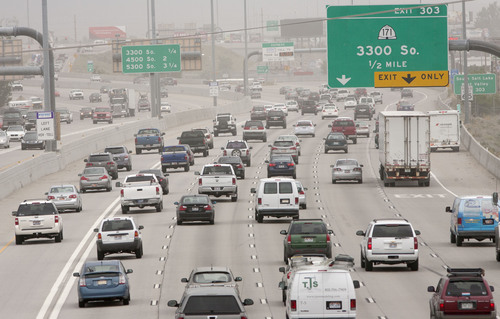This is an archived article that was published on sltrib.com in 2014, and information in the article may be outdated. It is provided only for personal research purposes and may not be reprinted.
Drastically cutting the emissions that ruin the Wasatch Front's wintertime air quality should be a pain-free cinch, but only after Utahns start driving cleaner-burning automobiles using reduced-sulfur gasoline.
Cutting the miles driven by 10 percent also would help cut pollution by up to 8 percent.
Those are the leading "consensus" recommendations released Wednesday by Utah Gov. Gary Herbert's Clean Air Action Team, empaneled a year ago to explore ways to confront the state's air quality crisis.
The 38-member advisory group also urged the elimination of wood burning during inversions, getting more people around on foot and public transportation and mandating that only low-NOx water heaters can be sold along the Wasatch Front.
And it would help if the Utah Division of Air Quality got more funding and was allowed to adopt standards tougher than those of the federal government — modest proposals that have had a tough go in past legislative sessions.
Environmental activists like what the team is proposing.
"These are solid recommendations," said Matt Pacenza, HEAL Utah policy director. "But these policies will require a combination of political will, dollars and votes to become reality. We'll be watching closely to make sure that the Herbert Administration and State Legislature show the boldness on clean air issues that the public so desperately wants."
No. 1 on the team's list is getting so-called Tier 3, low-sulfur fuels into Utah gas tanks as soon as possible. The group's second priority is accelerating the transition to cleaner-burning, Tier 3 automobiles.
Achieving the first two goals by 2050 would cut 62 percent of the Wasatch Front's mobile emissions, according to the clean air team's report.
While wood-burning stoves have been an oft-discussed contributor to winter-time pollution, water heaters have gotten less attention.
The clean air panel reported that the appliances account for nearly half of a building's emissions. Replacing every heater with a low-emissions unit, which produces 70 percent less NOx, would result in a 37 percent cut in building emissions.
Another 30 percent reduction could be achieved by retrofitting every home with energy efficiency measures at an average cost of $5,000 per home.



